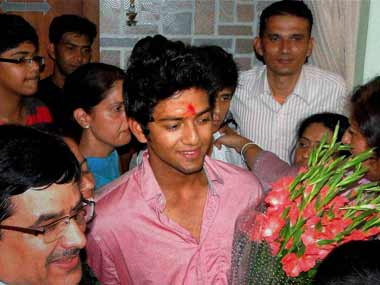Under-19 cricket star Unmukt Chand’s attendance problem at Delhi’s well-known St. Stephen’s College is an issue for the nation now. Cricket fans want him to write his BA first year exams, but the St Stephen’s management cannot let him because “rules are rules” whether senior star Mahendra Singh Dhoni likes it or not. St Stephen’s is actually not asking for too much. They want him in the class for a mere 33.3 percent of the total time; but how can a professional cricketer spend that many days of a year in a classroom? But then if you cannot attend classes, why go to Stephen’s at all? Take the exam as a private student. This is not a problem unique to Unmukt Chand or Mahendra Singh Dhoni. Compulsory attendance is an adolescent issue that has little correlation with ensuring quality of education or compliance, but a shortcut for insecure educational institutions to keep classes full. [caption id=“attachment_438731” align=“alignleft” width=“380”]  Should Chand receive special treatment due to his achievements? PTI[/caption] As they hit adolescence, a number of (plus two and college) students want to bunk classes for many reasons - some find going to classes very boring, while some feel the lectures or tutorials are very bad. Some stay awake all night to play online games and feel too sleepy to attend classes, something that reportedly forced Bombay IIT set an attendance condition a few years ago. Some feel they are quite smart and can manage on their own. Parents and school teachers would agree that the restlessness kicks in once the child crosses the 10th standard and feels he or she can cope independent of the classroom. Kids start detesting classrooms and attendance starts to drop, and teachers and schools get strict. The trend continues as they get into college. Universities also set attendance rules and for many it is a touch-and-go when it comes to qualifying for an exam. Of course, Unmukt Chand, doesn’t have a choice. A professional cricketer, that too an Indian, cannot be home for 33.3 percent of his time in a year, let alone attending college classes. But the question his situation raises is: are the attendance rules necessary? Do they have anything to do with children’s learning, performance and discipline? Perhaps for discipline, yes; but for learning and performance, attendance offers no guarantee. In fact, forcefully retaining students in class rooms means nothing if the classes don’t offer value. With absolutely no control over the quality of education and a free-for-all licensing system, the quality of faculty and education in a large number of institutions, particularly the mushrooming engineering colleges, is really suspect. What should work instead is an uncompromising demand for a certain level of performance from the students, that too every semester or year, and making it mandatory for promotion to the next semester or year. Such situations will lead to a demand and supply situation wherein both classrooms and students’ performance have to necessarily improve. Zero demand on attendance, but no compromise on performance is in fact a working formula. But it also means many other things as well. BITS Pilani, a top private university in India is an interesting example. The institution, which runs a tough entrance exam to ensure only meritorious students gain admission to its courses, states upfront that it doesn’t want to force students into classrooms and sweat over the minimum attendance requirements. A student here can choose to have zero attendance. But will he or she ever be able to exercise this abundant freedom? No; because if the student doesn’t go to the lectures and tutorials, there is no way that he/she can take the periodic and surprise tests and quizzes in the class and a maintain a good CGPA (cumulative grade point average), the technical term for grade. Neither are there avenues for private tuitions. While demanding no compliance and making it unavoidable, the management also ensures that the lectures and tutorials attract students to the classrooms by their quality. Of course, there are exceptions and kids do skip classes when the teachers offer no value. However, these teachers run the risk of becoming unwanted among the students while they choose their lectures next time. Being shunned by students is bad stigma. Perhaps this is a model that the institutions should move towards. They should ask the kids not to compulsorily sit in classes, but should demand high grades. This will lead to a demand for better class-room education, better teachers and evaluation processes, and better trained students. Addressing mandatory attendance in isolation is futile. At the same time, if classrooms are not important, then why run institutions? That compulsory attendance doesn’t help is evident from the massive drop-out and failure rates of students in the countless engineering colleges of the south. With no demand for a minimum grade to qualify for the next semester or year, children accumulate bad papers and finally fail. The private colleges allow students who don’t clear exams in the first year to sit for the second year and so on because expelling them means loss of revenue. This is where our higher education mandarins, who have been unable to check the proliferation of arts and science/technology colleges, should pay attention. Instead of improving the quality of education, they set benchmarks for discipline. Discipline is not education, but good education needs discipline. Mandatory attendance fails when any of these components are bad: students, faculty and facilities. If all the three are good, classes will be full. But then, as the Kerala High court observed recently, many of these institutions will have to close down.
A professional cricketer, that too an Indian, cannot be home most of the time in a year, let alone attending college classes. But the question Unmukt’s situation raises is: are the attendance rules necessary?
Advertisement
End of Article


)

)
)
)
)
)
)
)
)



